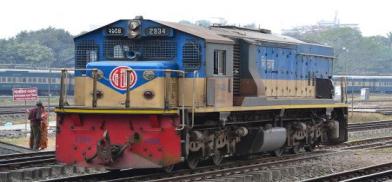Bangladesh seeks India’s assistance in developing its railway and power infrastructure
India has agreed to supply locomotives, passenger carriages, and technology for railway signaling systems to Bangladesh as Dhaka sought New Delhi’s assistance in developing and modernizing its railway infrastructure

India has agreed to supply locomotives, passenger carriages, and technology for railway signaling systems to Bangladesh as Dhaka sought New Delhi’s assistance in developing and modernizing its railway infrastructure.
On Tuesday, Bangladesh High Commissioner Muhammad Imran met the Indian Railway Minister Ashwini Vaishnaw and Power Minister Raj Kumar Singh and discussed bilateral cooperation and issues related to the development of railways and power infrastructure in the country.
According to a statement released by the Bangladesh High Commission, New Delhi expressed its readiness to “supply locomotives, diesel-electric multiple units (DEMU) train, mainline electric multiple unit (MEMU) train as well as passenger carriages and transfer of technology for railway signaling system to Bangladesh.”
The envoy also discussed the progress in the up-gradation of the Dhaka-Chattogram railway link, especially the Akhaura-Laksam section, and sought New Delhi’s support, according to the statement.
In his meeting with the power minister, the Bangladeshi envoy also discussed trilateral cooperation in the hydropower sector and transnational power connectivity among Bangladesh, Bhutan, and India.
They also discussed the Maitree project, a 1,320-MW coal-fired power station, being built by the Bangladesh India Friendship Power Company (BIFPCL), a 50-50 joint venture between India’s state-run National Thermal Power Corporation (NTPC) and Bangladesh Power Development Board (BPDB).
The plant will be one of the largest coal-fired power plants in Bangladesh and is set to be commissioned this year. In the last few years the two countries have enhanced their cooperation, including enhancing connectivity and joint power generation, as part of their overall strategy to integrate the sub-region more economically.
(SAM)









Post a Comment